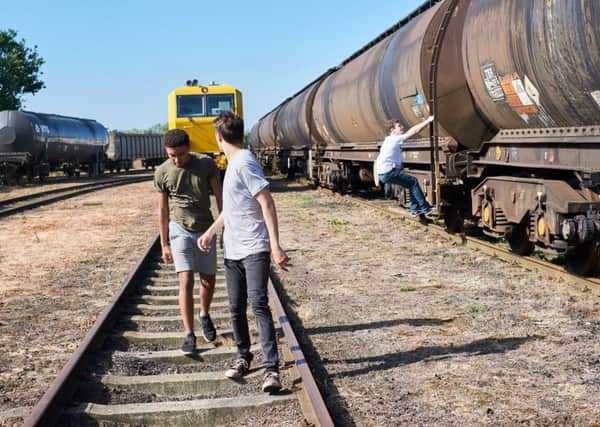Dangers of playing on railway lines


And while many people may be aware of the dangers of being run over by a fast-moving train, the dangers of electrocution are often even greater.
Deaths occur regularly as a result of children playing on railway lines and now there are moves to make youngsters and their parents more aware.
Advertisement
Hide AdAdvertisement
Hide AdWe’ve just moved to a house backing onto a railway line. What advice should I give to my children about the dangers of going near the tracks?
Ryan Ackerman, Network Rail community safety manager, is clear about the advice.
He says: “If there’s one piece of advice you should give to your children, it’s that the railway is full of both obvious and hidden dangers, so the only way to make sure they stay completely safe is to stay off the tracks.
“Children shouldn’t be scared to use the railway but they do need to understand that if they’re on the tracks, they’re on dangerous ground.”
Advertisement
Hide AdAdvertisement
Hide AdResearch by Network Rail and the British Transport Police found that, worryingly, more than a quarter of teenagers confess to behaving in a way that could endanger their life on the railway.
The number of young people taking risks on the railway track has gone up by almost 80 per cent in the last five years - and in the last 12 months alone, seven young people under the age of 18 have lost their lives and a further 48 people have received life-changing injuries.
“The research also shows children are unaware of the various dangers posed when going on the railway,” continues Ryan. “Electricity is easily the most dangerous factor in stepping on the track: 25,000 volts of electricity can jump from overhead cables without a person even needing to touch them. It’s always switched on and nine out of 10 people die when they’re struck by it, the rest receiving life-changing injuries. Trains can also silently reach speeds of 125mph and they run 24 hours a day - so even if you think it’s a ‘quiet time’, you run the risk of being hit by one of the 1,000-tonne freight trains that run all night.
“The electrified third rail is also highly dangerous - it looks just like an ordinary rail, but it carries 750 volts of direct current that will attract rather than repel you. If you touch the rail, you’ll ‘stick’ to it.
Advertisement
Hide AdAdvertisement
Hide AdHe adds: “I would encourage you and your children to watch the new film by Network Rail & the British Transport Police. The film was developed as part of the YouVsTrain (YouVsTrain.co.uk) trespass-prevention campaign and documents the real-life story of Tom Hubbard, who was electrocuted by overhead cables on the railway when he was just 14, leaving him with life-changing injuries.”